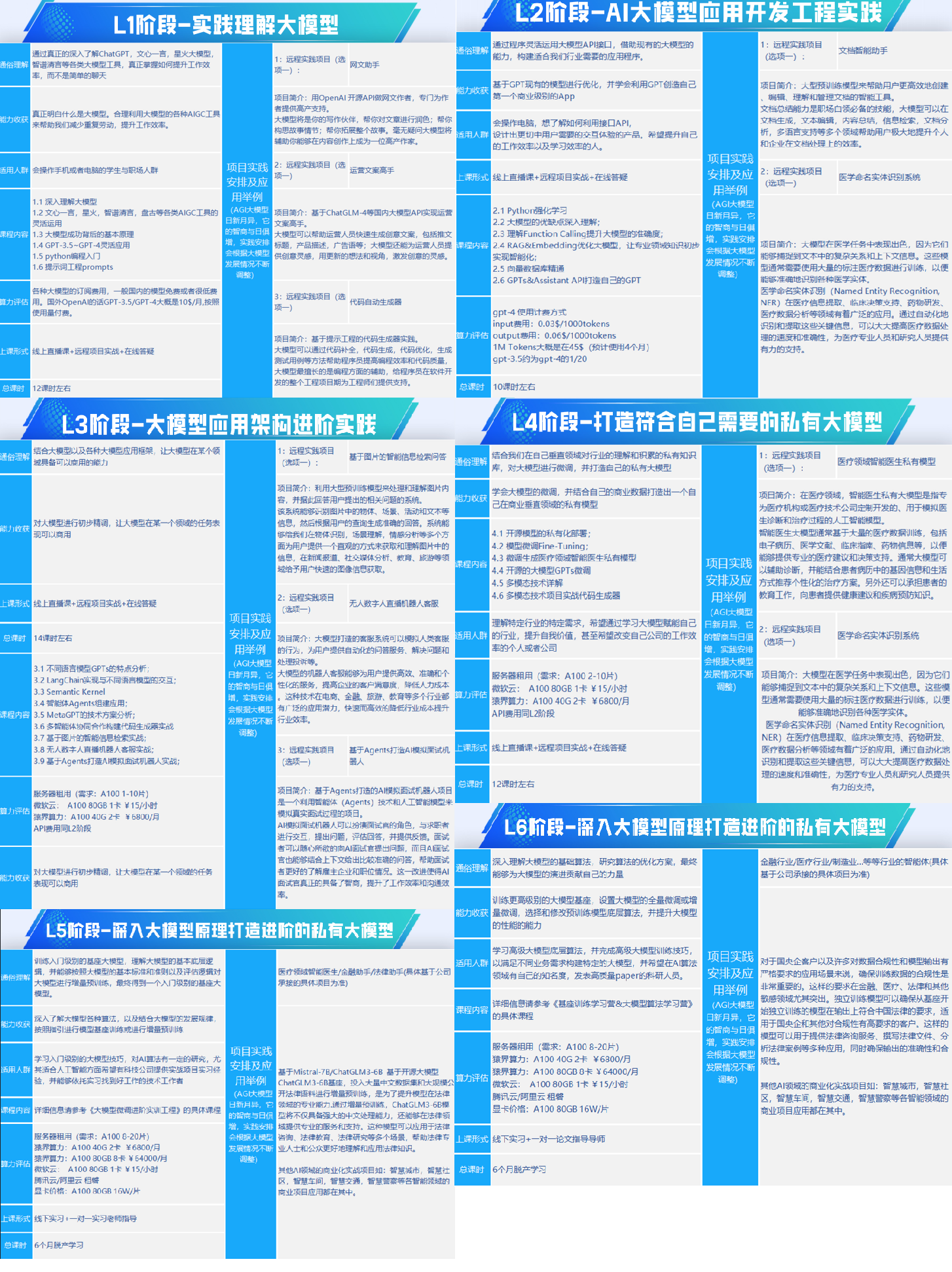1. Prompt基本使用
from langchain_core.prompts import PromptTemplate
from langchain_core.prompts import ChatPromptTemplate
这里有两种prompt,其对应两种形式:PromptTemplate 和 ChatPromptTemplate
从某种意义来说,前者是一个通用形式,后者是在chat领域的一个特殊表达。
from langchain_core.prompts import PromptTemplate
prompt_template = PromptTemplate.from_template(
"Tell me a {adjective} joke about {content}."
)
prompt_template.format(adjective="funny", content="chickens")
# 'Tell me a funny joke about chickens.'
PromptTemplate做的操作很简单,相当于把 f'Tell me a {adjective} joke about {content}.' 从变量带入字符串中分离开了,Template都可以使用format函数转化为字符串,但是这里要注意的是,参数是变量了并不是字典。
ChatPromptTemplate相当于在PromptTemplate做了一个对话的快捷方式,一般来说对话是这样的:
System: You are a helpful AI bot. Your name is Bob.
Human: Hello, how are you doing?
AI: I'm doing well, thanks!
Human: What is your name?
但是ChatPromptTemplate将其分解得具体了,其有两种表达形式,一种使用列表,一种使用更具体的ChatMessagePromptTemplate,AIMessagePromptTemplate,HumanMessagePromptTemplate
# 使用列表
from langchain_core.prompts import ChatPromptTemplate
chat_template = ChatPromptTemplate.from_messages(
[
("system", "You are a helpful AI bot. Your name is {name}."),
("human", "Hello, how are you doing?"),
("ai", "I'm doing well, thanks!"),
("human", "{user_input}"),
]
)
# 转化为字符串
messages = chat_template.format(name="Bob", user_input="What is your name?")
# 转化为列表 可以具体看看是 SystemMessage HumanMessage AIMessage 还是其他的 Message
messages = chat_template.format_messages(name="Bob", user_input="What is your name?")
# 使用细分的方式
from langchain_core.prompts import ChatPromptTemplate, SystemMessagePromptTemplate, AIMessagePromptTemplate, HumanMessagePromptTemplate
c1 = SystemMessagePromptTemplate.from_template("You are a helpful AI bot. Your name is {name}.")
c2 = HumanMessagePromptTemplate.from_template("You are a helpful AI bot. Your name is {name}.")
c3 = AIMessagePromptTemplate.from_template("You are a helpful AI bot. Your name is {name}.")
c4 = HumanMessagePromptTemplate.from_template("You are a helpful AI bot. Your name is {name}.")
chat_template = ChatPromptTemplate.from_messages([c1, c2, c3, c4])
# 效果如上
messages = chat_template.format(name="Bob", user_input="What is your name?")
messages = chat_template.format_messages(name="Bob", user_input="What is your name?")
在这里要注意的是,使用列表的话元组前面一个字符串只能是 one of 'human', 'user', 'ai', 'assistant', or 'system'.,不然会报错。其中还有一个ChatMessagePromptTemplate,其from_template参数中还有一个role参数,可以自定义对话实体,不需要必须满足'human', 'user', 'ai', 'assistant', or 'system'其中的一个。
在定义好template之后,就可以搭配模型使用chain了
from langchain_community.llms import Ollama
from langchain_core.prompts import ChatPromptTemplate
llm = Ollama(model='llama3', temperature=0.0)
chat_template = ChatPromptTemplate.from_messages(
[
("system", "You are a helpful AI bot. Your name is {name}."),
("human", "Hello, how are you doing?"),
("ai", "I'm doing well, thanks!"),
("human", "{user_input}"),
]
)
chain = chat_template | llm
chain.invoke({'name': 'Bob', 'user_input': 'What is your name?'})
# "Nice to meet you! My name is Bob, and I'm here to help answer any questions or provide assistance you may need. How can I help you today?"
2. 进阶Prompt
2.1 MessagesPlaceholder
MessagesPlaceholder: 当暂时不确定使用什么角色需要占位时
from langchain_core.prompts import ChatPromptTemplate, HumanMessagePromptTemplate, MessagesPlaceholder
from langchain_core.messages import AIMessage, HumanMessage # 这里与AIMessagePromptTemplate的区别在与前者是不能使用input_variables的
human_prompt = "Summarize our conversation so far in {word_count} words."
human_message_template = HumanMessagePromptTemplate.from_template(human_prompt)
# 在这里使用MessagesPlaceholder进行占位
chat_prompt = ChatPromptTemplate.from_messages(
[MessagesPlaceholder(variable_name="conversation"), human_message_template]
)
# 在这里添加,添加参数为占位时设置的variable_name
human_message = HumanMessage(content="What is the best way to learn programming?")
ai_message = AIMessage(
content="""1.Choose a programming language: Decide on a programming language that you want to learn. 2. Start with the basics: Familiarize yourself with the basic programming concepts such as variables, data types and control structures. 3. Practice, practice, practice: The best way to learn programming is through hands-on experience"""
)
# 这里的 word_count 对应 chat_prompt 中的 input_variables
chat_prompt.format_prompt(
conversation=[human_message, ai_message], word_count="10"
).to_messages()
利用示例让LLM模仿输出进而获得一个更好的效果在prompt工程中很常见,但是大量的实例会造成一个问题,那就是模型的输入长度是由限制的,大量的实例可能会导致在input_variables输入时出现长度过长模型无法输入的问题。这里就需要引入selectors
2.2 selectors
selectors:通过对示例进行选择的方式来减少示例,进而减少文本长度。要注意的是使用selectors后并不会立刻就删除示例,示例是在FewShotPromptTemplate中被删除的。
from langchain_core.prompts import PromptTemplate
examples = [
{"input": "happy", "output": "sad"},
{"input": "tall", "output": "short"},
{"input": "energetic", "output": "lethargic"},
{"input": "sunny", "output": "gloomy"},
{"input": "windy", "output": "calm"},
]
example_prompt = PromptTemplate(
input_variables=["input", "output"],
template="Input: {input}\nOutput: {output}",
)
# 要注意的是format_prompt是不可以使用列表的,只能一个参数参数输入
example_prompt.format_prompt(**examples[0])
2.2.1 LengthBasedExampleSelector
LengthBasedExampleSelector: 根据文本长度来选择
from langchain_core.example_selectors import LengthBasedExampleSelector
from langchain_core.prompts import FewShotPromptTemplate
# 定义example_selector
example_selector = LengthBasedExampleSelector(
examples=examples,
example_prompt=example_prompt,
# 这里max_length是针对 one example 的
max_length=25,
# get_text_length 是用来计算 example_prompt 的长度的
# get_text_length: Callable[[str], int] = lambda x: len(re.split("\n| ", x))
)
FewShotPromptTemplate(
example_selector=example_selector,
example_prompt=example_prompt,
prefix="Give the antonym of every input",
suffix="Input: {adjective}\nOutput:",
# 这里的input_variables与suffix中的adjective对应
input_variables=["adjective"],
)
2.2.2 NGramOverlapExampleSelector
NGramOverlapExampleSelector: 根据 ngram 重叠分数,根据与输入最相似的示例 NGramOverlapExampleSelector 来选择和排序示例。ngram 重叠分数是介于 0.0 和 1.0 之间的浮点数,包括 0.0(含)。ngram 重叠分数小于或等于阈值的示例被排除在外。默认情况下,阈值设置为 -1.0,因此不会排除任何示例,只会对它们重新排序。将阈值设置为 0.0 将排除与输入没有 ngram 重叠的示例。
from langchain_community.example_selector.ngram_overlap import NGramOverlapExampleSelector
example_selector = NGramOverlapExampleSelector(
examples=examples,
example_prompt=example_prompt,
# threshold 阈值默认设置为 -1.0
threshold=-1.0,
# 阈值小于 0.0:选择器按 ngram 重叠分数对示例进行排序,不排除任何示例。
# 阈值大于 1.0: Selector 排除所有示例,返回一个空列表。
# 阈值等于 0.0: 选择器按 ngram 重叠分数对示例进行排序, 并排除那些与输入没有 ngram 重叠的词。
)
dynamic_prompt = FewShotPromptTemplate(
# We provide an ExampleSelector instead of examples.
example_selector=example_selector,
example_prompt=example_prompt,
prefix="Give the Spanish translation of every input",
suffix="Input: {sentence}\nOutput:",
input_variables=["sentence"],
)
2.2.3 SemanticSimilarityExampleSelector
SemanticSimilarityExampleSelector:此对象根据与输入的相似性选择示例。它通过查找具有与输入具有最大余弦相似度的嵌入的示例来实现此目的。
from langchain_chroma import Chroma
from langchain_core.example_selectors import SemanticSimilarityExampleSelector
from langchain_core.prompts import FewShotPromptTemplate
from langchain_openai import OpenAIEmbeddings
example_selector = SemanticSimilarityExampleSelector.from_examples(
examples,
# 使用 embedding 层来判断文本相似性
OpenAIEmbeddings(),
# Chroma用于生成嵌入的嵌入类,用于度量语义相似度。
Chroma,
# k表示要生成的示例数量
k=1,
)
similar_prompt = FewShotPromptTemplate(
example_selector=example_selector,
example_prompt=example_prompt,
prefix="Give the antonym of every input",
suffix="Input: {adjective}\nOutput:",
input_variables=["adjective"],
)
2.2.4 MaxMarginalRelevanceExampleSelector
MaxMarginalRelevanceExampleSelector:与输入最相似的示例组合来选择示例,同时还针对多样性进行了优化。为此,它找到具有与输入具有最大余弦相似度的嵌入的示例,然后迭代添加它们,同时惩罚它们与已选定示例的接近程度。
example_selector = MaxMarginalRelevanceExampleSelector.from_examples(
examples,
OpenAIEmbeddings(),
# FAISS 和 Chroma 一样用于生成嵌入的嵌入类,用于度量语义相似度。
FAISS,
k=2,
)
mmr_prompt = FewShotPromptTemplate(
# We provide an ExampleSelector instead of examples.
example_selector=example_selector,
example_prompt=example_prompt,
prefix="Give the antonym of every input",
suffix="Input: {adjective}\nOutput:",
input_variables=["adjective"],
)
如何系统的去学习大模型LLM ?
作为一名热心肠的互联网老兵,我意识到有很多经验和知识值得分享给大家,也可以通过我们的能力和经验解答大家在人工智能学习中的很多困惑,所以在工作繁忙的情况下还是坚持各种整理和分享。
但苦于知识传播途径有限,很多互联网行业朋友无法获得正确的资料得到学习提升,故此将并将重要的 AI大模型资料 包括AI大模型入门学习思维导图、精品AI大模型学习书籍手册、视频教程、实战学习等录播视频免费分享出来。
😝有需要的小伙伴,可以V扫描下方二维码免费领取🆓

一、全套AGI大模型学习路线
AI大模型时代的学习之旅:从基础到前沿,掌握人工智能的核心技能!

二、640套AI大模型报告合集
这套包含640份报告的合集,涵盖了AI大模型的理论研究、技术实现、行业应用等多个方面。无论您是科研人员、工程师,还是对AI大模型感兴趣的爱好者,这套报告合集都将为您提供宝贵的信息和启示。

三、AI大模型经典PDF籍
随着人工智能技术的飞速发展,AI大模型已经成为了当今科技领域的一大热点。这些大型预训练模型,如GPT-3、BERT、XLNet等,以其强大的语言理解和生成能力,正在改变我们对人工智能的认识。 那以下这些PDF籍就是非常不错的学习资源。


四、AI大模型商业化落地方案

阶段1:AI大模型时代的基础理解
- 目标:了解AI大模型的基本概念、发展历程和核心原理。
- 内容:
- L1.1 人工智能简述与大模型起源
- L1.2 大模型与通用人工智能
- L1.3 GPT模型的发展历程
- L1.4 模型工程
- L1.4.1 知识大模型
- L1.4.2 生产大模型
- L1.4.3 模型工程方法论
- L1.4.4 模型工程实践 - L1.5 GPT应用案例
阶段2:AI大模型API应用开发工程
- 目标:掌握AI大模型API的使用和开发,以及相关的编程技能。
- 内容:
- L2.1 API接口
- L2.1.1 OpenAI API接口
- L2.1.2 Python接口接入
- L2.1.3 BOT工具类框架
- L2.1.4 代码示例 - L2.2 Prompt框架
- L2.2.1 什么是Prompt
- L2.2.2 Prompt框架应用现状
- L2.2.3 基于GPTAS的Prompt框架
- L2.2.4 Prompt框架与Thought
- L2.2.5 Prompt框架与提示词 - L2.3 流水线工程
- L2.3.1 流水线工程的概念
- L2.3.2 流水线工程的优点
- L2.3.3 流水线工程的应用 - L2.4 总结与展望
- L2.1 API接口
阶段3:AI大模型应用架构实践
- 目标:深入理解AI大模型的应用架构,并能够进行私有化部署。
- 内容:
- L3.1 Agent模型框架
- L3.1.1 Agent模型框架的设计理念
- L3.1.2 Agent模型框架的核心组件
- L3.1.3 Agent模型框架的实现细节 - L3.2 MetaGPT
- L3.2.1 MetaGPT的基本概念
- L3.2.2 MetaGPT的工作原理
- L3.2.3 MetaGPT的应用场景 - L3.3 ChatGLM
- L3.3.1 ChatGLM的特点
- L3.3.2 ChatGLM的开发环境
- L3.3.3 ChatGLM的使用示例 - L3.4 LLAMA
- L3.4.1 LLAMA的特点
- L3.4.2 LLAMA的开发环境
- L3.4.3 LLAMA的使用示例 - L3.5 其他大模型介绍
- L3.1 Agent模型框架
阶段4:AI大模型私有化部署
- 目标:掌握多种AI大模型的私有化部署,包括多模态和特定领域模型。
- 内容:
- L4.1 模型私有化部署概述
- L4.2 模型私有化部署的关键技术
- L4.3 模型私有化部署的实施步骤
- L4.4 模型私有化部署的应用场景
学习计划:
- 阶段1:1-2个月,建立AI大模型的基础知识体系。
- 阶段2:2-3个月,专注于API应用开发能力的提升。
- 阶段3:3-4个月,深入实践AI大模型的应用架构和私有化部署。
- 阶段4:4-5个月,专注于高级模型的应用和部署。
这份完整版的大模型 LLM 学习资料已经上传优快云,朋友们如果需要可以微信扫描下方优快云官方认证二维码免费领取【保证100%免费】
😝有需要的小伙伴,可以Vx扫描下方二维码免费领取🆓





















 1116
1116

 被折叠的 条评论
为什么被折叠?
被折叠的 条评论
为什么被折叠?








